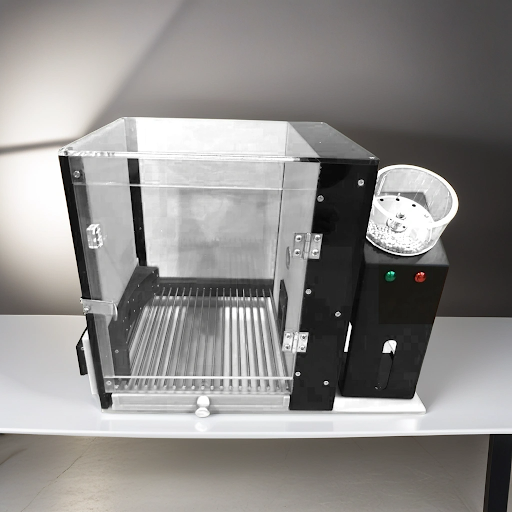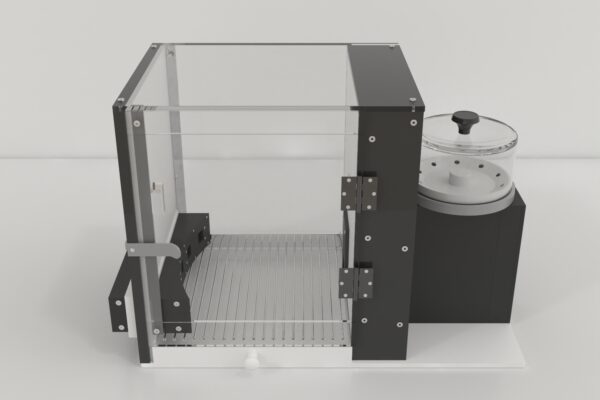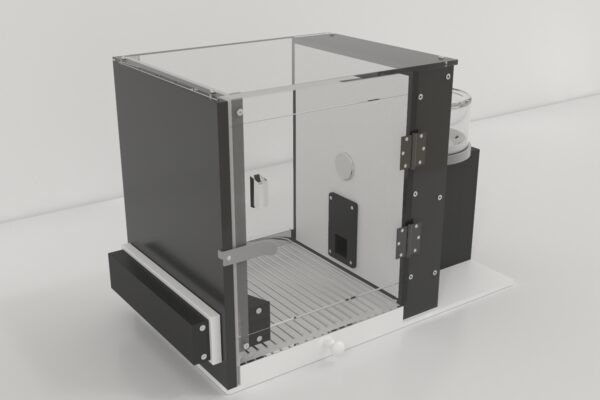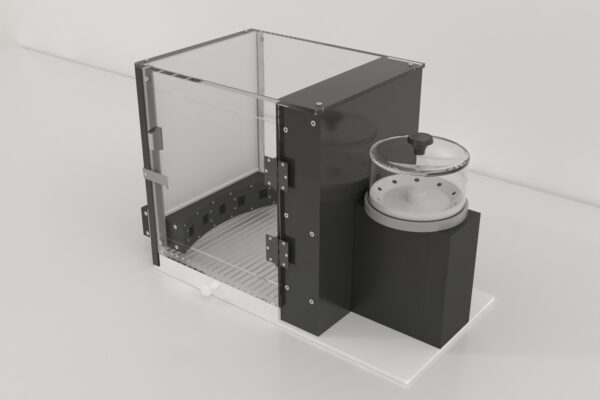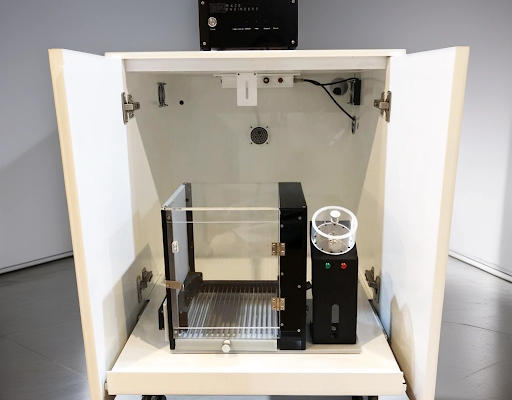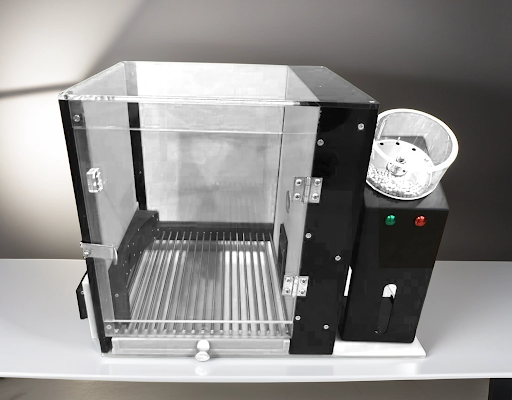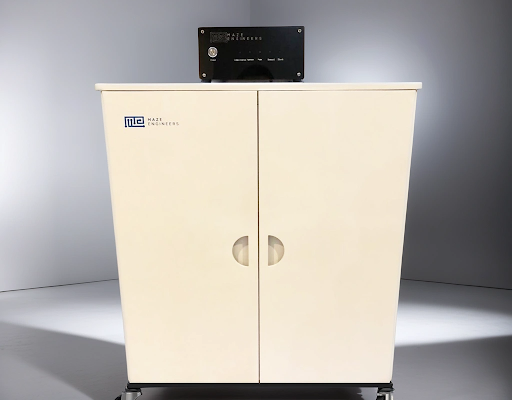Description
The 5-Choice Serial Reaction Time task or 5CSRTT was developed by Robbins et al (Robbins et al., 2002) to study behavioral traits associated with attention deficit hyperactivity disorder (ADHD) such as attention and impulse control.
The 5CSRTT apparatus consists of an operant conditioning chamber with 2 Plexiglas sidewalls; the aluminum front wall is rounded and contains five nose poke apertures (2.5 x 2.2 x 2.2 cm each, 2 cm above the floor)
Each apparatus you purchase from MazeEngineers comes with a stimulus LED light as well as an infrared nose poke sensor.
A stainless steel back wall has a food cachet installed which provides food pellets from the pellet dispenser. Infrared sensor and an LED signal light. included
The shocker floor grid allows for punishment in the experiment. The removable feces and urine tray below this grid allow for easy cleaning.

